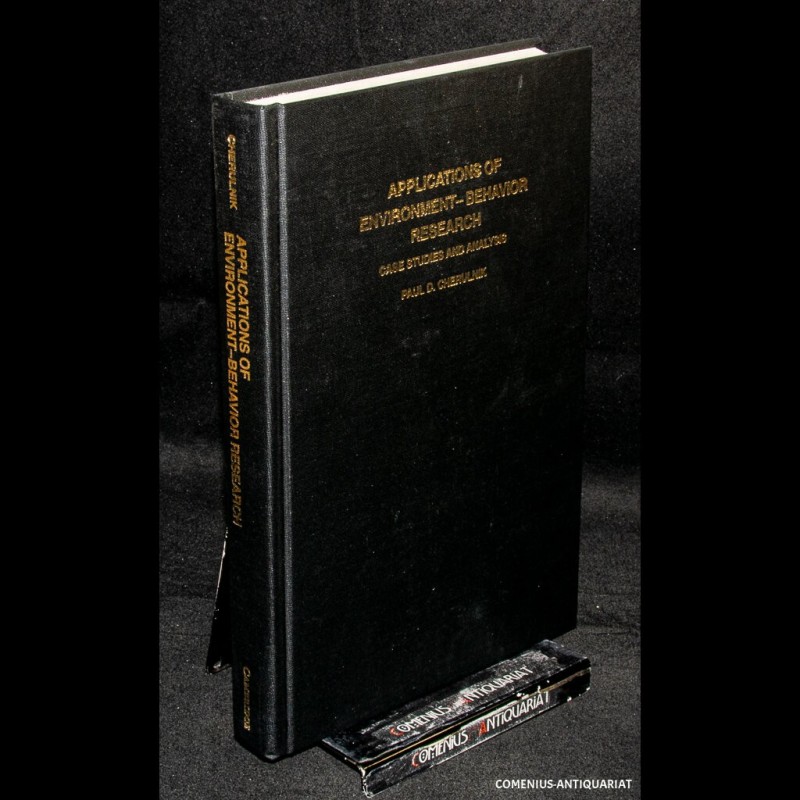Cherulnik, Paul D.,
Applications of Environment-Behavior Research. Case studies and analysis. New York: Cambridge University Press, 1993. xiii, 342 Seiten mit Abbildungen, Literaturverzeichnis und Register. Pappband (gebunden). Grossoktav. 235 x 155 mm.
* Hinterer Deckel mit Kratzspur und Stichcode-Etikette.
Bestell-Nr.158251
Cherulnik |
Psychologie |
Soziologie |
Architektur |
Environmental Design
Architects, city planners, and other design professionals have used theory and research from psychology and other behavioral sciences to make their work more responsive to the needs of people who use the buildings, parks, and city streets the designers help to shape. Applications of Environment—Behavior Research describes and analyzes 13 projects for which the final plans were informed by social-scientific research. Using a common con-ceptual framework, author Paul Cherulnik considers a variety of settings, including treatment facilities, public housing, offices, parks, neighbor-hoods, and city centers. Some of the cases utilize basic behavioral theory or research, including classic work in psychology and other disciplines, whereas in other cases applied research was conducted specifically for the purposes of the project in question.
CONTENTS
Series foreword page ix
Preface xi
Part I. Introduction 1
I. An approach to environmental design 3
2. A model of environmental-design/planning research and a
framework for analyzing cases 13
Part II. Building design 27
3. Contra Costa County Main Detention Facility 29
4. The Patient and Visitor Participation Project, University of
Michigan Replacement Hospital Program 48
5. The Effects of the Living Environment on the Mentally
Retarded (ELEMR) Project 64
6. Federal Aviation Administration Northwest Regional
Headquarters 91
7. Jones Dormitory redesign, Trinity College 113
8. Sociopetal space in psychiatric hospitals 131
Part Ill. Community planning 153
9. Exxon Minipark redesign 155
10. Livable streets 175
I l. Defensible-space modifications at Clason Point Gardens 197
12. Ciudad Modela de la Universidad Catolica (Macul), Chile 221
Part IV. Environmental management 239
13. Promoting energy conservation 241
14. The 1985 Downtown Plan 264
15. The Lower Wisconsin State Riverway 291
Part V. Conclusion 315
16. Epilogue: the past, present, and future of environmental
design research 317
Index 341





 Privacy
Privacy
 Shipping Costs
Shipping Costs
 Google Mail
Google Mail
